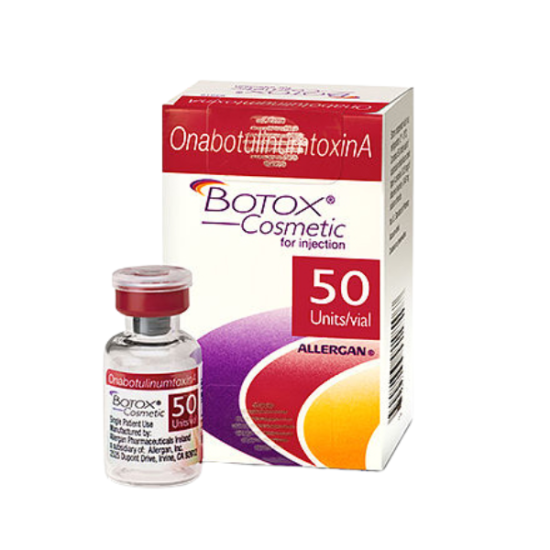Botox 50 Units Dilution Guide: Accurate and Safe Preparation

Botox is one of the most popular and versatile treatments in both cosmetic and medical fields. Whether it’s for reducing wrinkles or treating chronic migraines, understanding the proper Botox dilution process is crucial to ensuring safety, efficacy, and precision. If you’re working with a 50-unit vial of Botox, knowing how to dilute it properly can make all the difference in your clinical practice.
In this guide, we will break down the key steps for reconstituting Botox 50 units, including dilution ratios, the best practices for reconstitution, storage guidelines, and essential tips for accurate administration.
Why Proper Botox Dilution is Essential
Botox comes in a powdered form that needs to be mixed with a sterile diluent (usually preservative-free saline) before use. The dilution ratio determines the concentration of Botox in the final solution and directly impacts the dosage per injection. Incorrect dilution can lead to inconsistent results, wasted product, and even adverse effects.
Understanding the ideal dilution for your treatment will help you deliver the best possible outcomes for your patients. Whether you’re performing cosmetic treatments like wrinkle reduction or medical procedures for conditions such as chronic migraines, proper dilution ensures accurate dosing and effective results.
Materials You’ll Need
Before you begin the dilution process, gather the following materials:
-
50-unit vial of Botox
-
Preservative-free 0.9% saline
-
1 or 3 mL sterile syringe with a 21–27G needle
-
Alcohol swabs for sanitizing
-
Sterile working surface
-
Labeling tools (e.g., pen or printer for labels)
Common Dilution Ratios for Botox 50 Units
The dilution ratio you choose depends on the treatment area and desired effect. Here are the most commonly used dilution options for a Botox 50 units:
| Saline Volume (mL) | Concentration (U/mL) | Units per 0.1 mL |
|---|---|---|
| 0.5 mL | 100 U/mL | 10 U |
| 1.0 mL | 50 U/mL | 5 U |
| 2.5 mL | 20 U/mL | 2 U |
| 5.0 mL | 10 U/mL | 1 U |
Each of these dilution options has a specific application:
-
0.5 mL dilution is more concentrated, ideal for small areas like glabellar lines or crow’s feet.
-
1.0 mL dilution is great for larger areas, ensuring the Botox spreads evenly.
-
2.5 mL and 5.0 mL dilutions are more suited for therapeutic use, such as treating chronic migraines or axillary hyperhidrosis, where more product is required for larger muscle groups.
Example:
If you want a 10-unit per 0.1 mL concentration (0.5 mL dilution), you would administer 10 units per 0.1 mL of Botox, which is ideal for small, localized injections.
Step-by-Step: How to Reconstitute Botox 50 Units
Reconstituting Botox properly is crucial to ensure that the toxin remains effective and stable. Follow these steps:
1. Prepare your materials:
Ensure all tools are sterile and ready. Clean your work area.
2. Sanitize the vial:
Wipe the top of the Botox vial with an alcohol swab and allow it to air dry.
3. Draw saline:
Use a sterile syringe to draw up the appropriate volume of preservative-free saline based on your desired dilution.
4. Add saline to the vial:
Inject the saline slowly into the vial, aiming the needle at the glass wall to avoid direct contact with the powder. Inject slowly to prevent foaming.
5. Mix gently:
Swirl the vial gently to mix the Botox powder with saline. Do not shake the vial, as shaking can cause the Botox protein to degrade, reducing its effectiveness.
6. Label the vial:
Clearly label the vial with the dilution ratio, date, and time of reconstitution for future reference.
Storage and Shelf Life
Once you’ve reconstituted Botox, proper storage is crucial to maintaining its efficacy.
-
Store Botox at 2–8°C (36–46°F) in a refrigerated environment.
-
The reconstituted solution should be used within 24 hours to ensure its potency.
-
Do not freeze or store Botox in direct sunlight, as both can negatively affect the quality of the product.
Before using the Botox, check for any changes in clarity. The solution should remain clear and colorless.
Labeling Your Reconstituted Vials
Proper labeling helps to avoid confusion and ensures accurate administration.
-
Label each reconstituted vial with the dilution ratio, the date and time of reconstitution, and your initials (optional but helpful).
-
Ensure that labels are clear, legible, and resistant to smudging.
Tips for Success
-
Use preservative-free saline: Always opt for saline without preservatives, as preservatives can impact the effectiveness of Botox.
-
Inject slowly and precisely: For optimal results, inject Botox slowly, allowing it to diffuse into the muscle for a more controlled effect.
-
Use the correct syringe size: For smaller injections, consider using an insulin syringe for greater accuracy.
-
Stay organized: Keeping track of your Botox vials, their dilution ratios, and expiration dates will help you provide consistent, reliable results to your patients.
What to Avoid
-
Shaking the vial: Always swirl gently to avoid breaking down the Botox protein.
-
Using non-sterile saline: Only use preservative-free saline to prevent contamination and product degradation.
-
Reusing vials: Never reuse an opened vial of Botox. Once opened, its effectiveness decreases over time.
Conclusion
Diluting Botox properly is essential for both cosmetic and therapeutic applications. The correct dilution ensures that you administer Botox with accuracy, providing optimal results for your patients. By following these dilution guidelines and best practices for reconstitution, you can be confident in your ability to perform Botox treatments that are safe, effective, and consistent.
Always ensure your dilution is based on the specific needs of your patient, and never compromise on quality or precision. With the right knowledge and techniques, you’ll ensure that every Botox treatment you administer is both safe and effective.






Leave a Comment